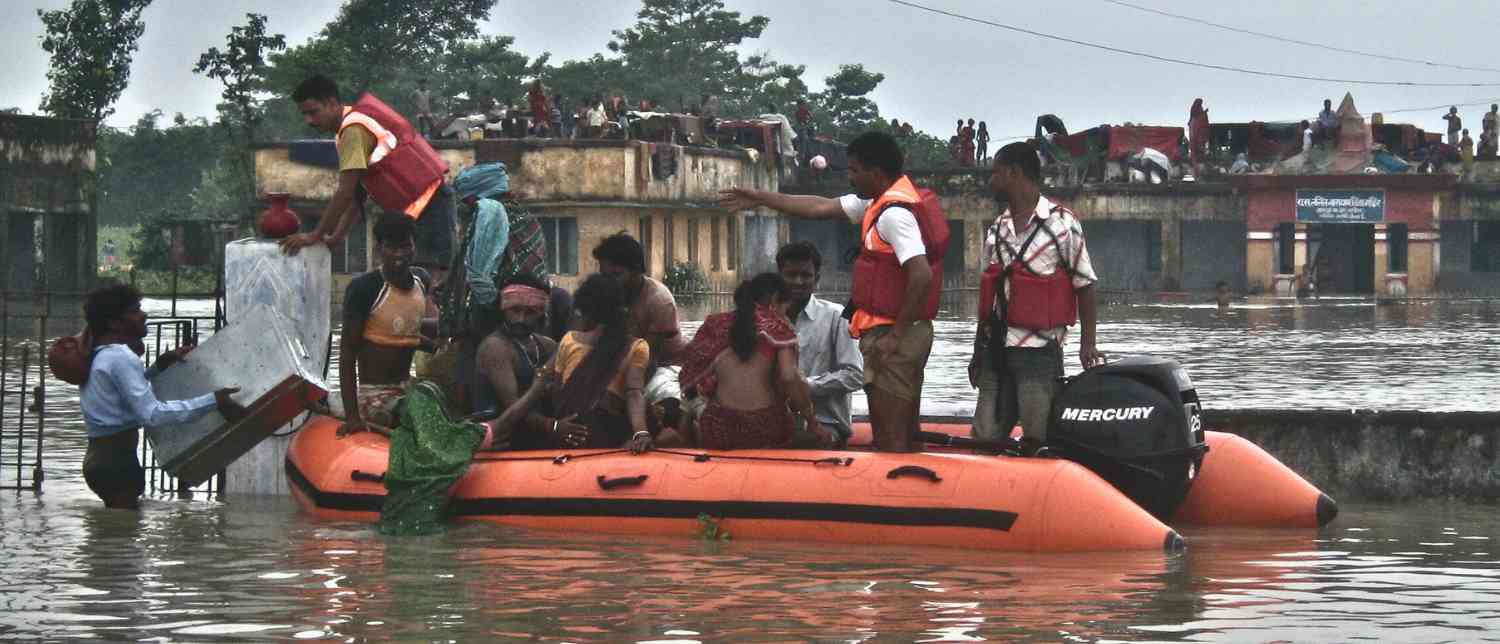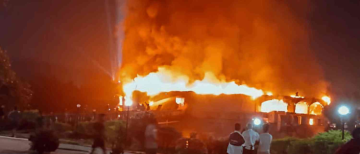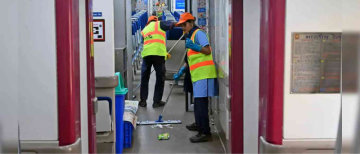The flood situation in Punjab has worsened over the past few days, with thousands of families struggling in waterlogged areas. Authorities confirmed on Friday that nearly 6,600 people have been rescued across flood-hit villages in Amritsar district, and special efforts are being made to reach those still cut off. To speed up the rescue work, the administration has now deployed all-terrain vehicles (ATVs), which can move in muddy and flooded roads where ordinary vehicles cannot pass.

Local officials said that heavy rainfall and the release of excess water from rivers like Beas and Ravi have caused flooding in several villages. Farmlands, homes, and even schools have been badly affected. According to reports, many families had to leave their homes and take shelter in safer places such as schools, government buildings, and community halls.
Rescue teams, including the National Disaster Response Force (NDRF), State Disaster Response Force (SDRF), and local police, are working around the clock. Apart from boats, the newly deployed ATVs are proving useful in reaching narrow village lanes filled with deep water. Volunteers and residents are also playing a major role by helping distribute food, drinking water, and medicines to those trapped.
Doctors in medical camps warn that waterborne diseases like diarrhea and dengue could increase if the flooding continues. Clean drinking water has become one of the biggest concerns for residents. With electricity cut off in many areas, families are also struggling with communication and basic needs.
Several residents expressed fear about losing their crops, which were almost ready for harvest. Farmers say that the damage to paddy and vegetable fields will affect their income for months. Meanwhile, shopkeepers in Amritsar’s rural markets shared that daily supplies have been disrupted, leading to shortages of milk, vegetables, and medicines.

Children have been badly affected too. Schools in many parts of Amritsar remain closed, and parents worry about the safety of their young ones. Some locals suggested that the government should prepare long-term flood defense systems, such as stronger embankments and better drainage systems, rather than only emergency relief after each flood.
This year’s floods have forced many to think beyond immediate rescue. Climate experts point out that heavy, uneven rainfall is becoming more common in Punjab due to changes in weather patterns. Urbanization and weaker flood-control infrastructure also make the region more vulnerable.

While the administration is being praised for quick relief work, many people believe that permanent solutions are needed. Suggestions from citizens include creating more check dams, improving early warning systems, and involving local communities in flood management.
For now, the priority remains saving lives and restoring normalcy. Relief camps are providing food packets, clean water, and bedding to displaced people. Teams are also working to repair broken electricity connections and clear waterlogged streets. Officials have assured that compensation will be given to families and farmers who lost crops or property to the floods.

The floods in Amritsar have once again reminded Punjab of the fragile balance between nature and human activity. While the rescue of 6,600 people is a big relief, the question remains: how can we prevent such large-scale loss in the future? For now, the people of Punjab are standing together, showing resilience, and waiting for the waters to recede.
With inputs from agencies
Image Source: Multiple agencies
© Copyright 2025. All Rights Reserved. Powered by Vygr Media.























